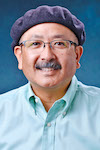
Gil Asakawa
Japanese Americans, and Asian Americans in general, love to talk over meals, snacks, tea and other drinks. We’re social and sociable, and we plan get-togethers with family, friends, board members and volunteers of organizations. We catch up on each other’s lives, strategize and plan events, discuss and argue over politics and sports. Meetings in the Asian community are often held in restaurants or accompanied by food. Food is a reward. Then again, sometimes the food isn’t quite the culturally appropriate option. For one AANHPI organization’s meeting where board members rotated bringing dinner, one guy actually brought bags of Taco Bell. It was tasty enough, but definitely not Asian!
I thought about my love for food and community on a trip to California’s Central Valley a couple of months ago, when I visited Koda Farms, the iconic source of the Japanese American community’s rice for almost 100 years. We all recognize the brands and packages found in Japanese groceries and Asian markets throughout the land: Kokuho Rose rice, Blue Star Mochiko flour and Sho Chiku Bai sweet rice.
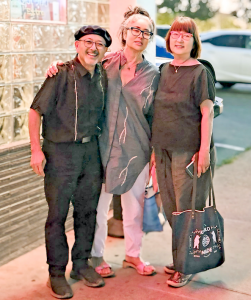
(From left) Gil Asakawa with Robin Koda and Jane Matsumoto at Wool Growers Restaurant (Photos: Gil Asakawa)
You can read my article in this issue of the Pacific Citizen about what’s happening at Koda Farms, which the Koda family is licensing out to another family owned company to continue producing their rice. So relax, folks — our kome will remain in good hands and in your kitchens.
At Koda Farms, I met Robin Koda, her mother, Tama, and her brother, Ross, to write about the family’s enormous legacy in our community. Early new coverage about the licensing of the farm’s products sparked a panic with JAs because they thought they would lose their beloved rice or not be able to make the yummy butter mochi cake that has become a staple of family gatherings and potluck meetings.
Los Angeles’ Japanese American National Museum, which is planning a big JA foodways exhibit in 2027, wanted the Kodas’ fascinating story included in the exhibit. So, the museum sent me, Jane Matsumoto of the Japanese American Cultural and Community Center, also in Little Tokyo, and a documentary film crew led by Evan Kodani, along with Kristen Hayashi and Alexa Nishimoto, to travel to the farm to chronicle the harvesting of the rice and interview the Koda family.
Along with the trip, of course, was a lot of food. Wonderful food. The highlight was a vegetarian curry rice lunch that was cooked by Matsumoto, an expert chef and foodie who led the JACCC’s addition of a kitchen and food-related programming (she’s since left the JACCC). She made the curry, while Robin Koda made the rice using her family’s Heirloom Kokuho Rose, the one with the image of her grandfather, Keisaburo Koda, who was called “The Rice King” on the sack. We all watched her closely as she poured the rice into her Zojirushi electric rice cooker, a familiar sight in many JA kitchens.
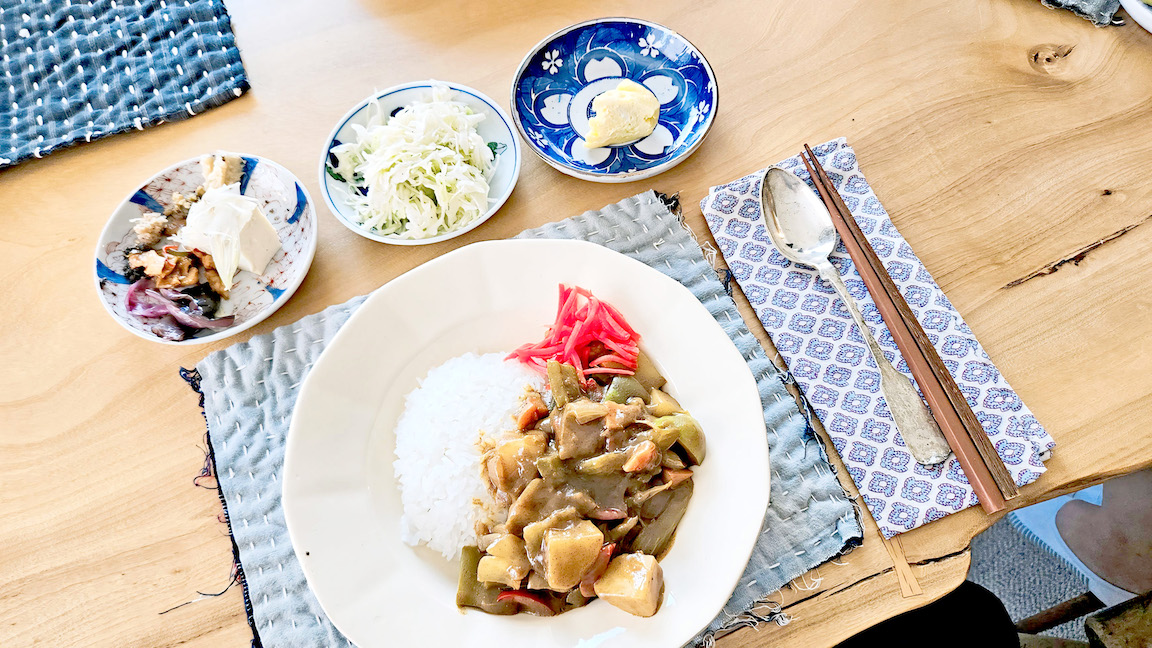
Curry rice with condiments (Photo: Gil Asakawa)
When I asked what method she uses to judge the amount of water — does she use the “knuckle method”? — she good-naturedly scolded me and laughed that she can’t believe people think you can stick your finger in the pot and measure up to the first knuckle. “Do you think your fingers are the same as Michael Jordan’s?” Umm, point made. Palming a basketball isn’t one of my skills.
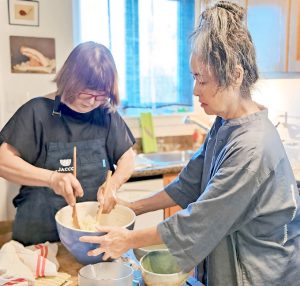
Jane Matsumoto and Robin Koda prepare lunch. (Photo: Gil Asakawa)
The Kokuho Rose was delicious: fragrant and chewy and a star in its own right, not just a “side dish.” It was so good, I had seconds of just plain rice.
Our team learned so much about Keisaburo Koda and his family’s legacy and impact on rice farming and all Japanese Americans in just a few days. Their story will be a terrific addition to the 2027 JANM exhibit, which is being planned by museum curator Emily Anderson. Stay tuned!
We also got to have a fabulous Mexican lunch at Firebaugh Restaurant, a bright diner where Robin Koda obviously dines often — the staff knew her and her favorite order. I had a huge plate of machaca — shredded pork — and vegetables with sides of refried beans and rice. Firebaugh (not “Fireball,” which is what I thought I heard) is just a few minutes down the road from the farm, which is outside the small town of Dos Palos. There’s a livelier town, South Dos Palos, not far off that has subdivisions, a wide main street, stores and restaurants. But Dos Palos is a sad-looking collection of homes and quiet streets that we drove through to get to Koda Farms.
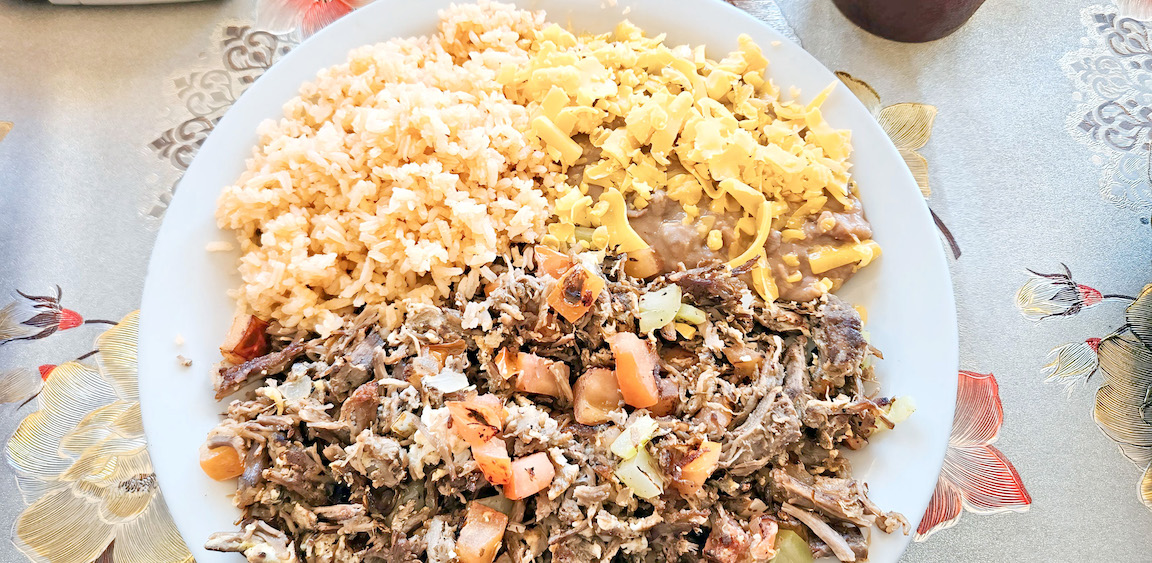
Machaca plate at Firebaugh Restaurant (Photo: Gil Asakawa)
Although I had terrific meals in San Jose when I arrived there at the Norman Y. Mineta International Airport and the day Jane Matsumoto and I drove back to San Jose and stopped at the city’s Japantown (a big nod to Kaita’s mentaiko cold udon!), my second most memorable meal was at the cool-named Wool Growers Restaurant, a French Basque culinary bastion in Los Banos, another town not far from the Kodas’ HQ.
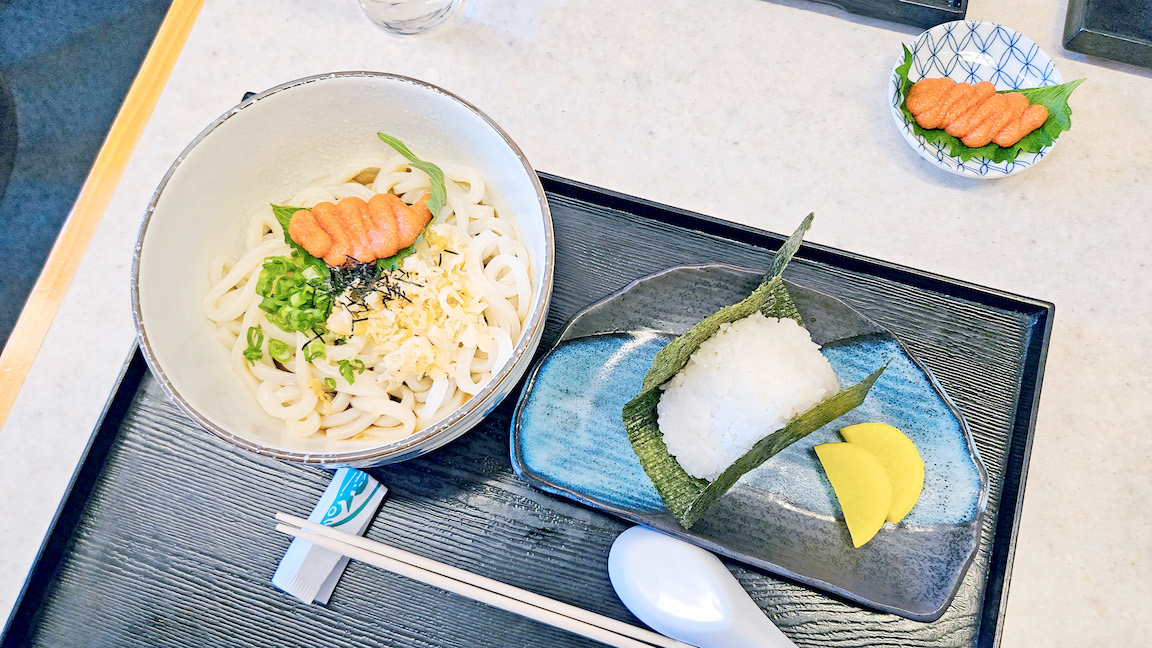
Mentaiko udon at Kaita (Photo: Gil Asakawa)
The place opens into a bar and pool hall, but when you walk through the hallway past the bar, you enter a big high-ceilinged dining room. Basque immigrant sheep herders and ranchers came to the area in the 1890s and early 20th century and established communities in California. The food is Basque American and delicious. And filling!
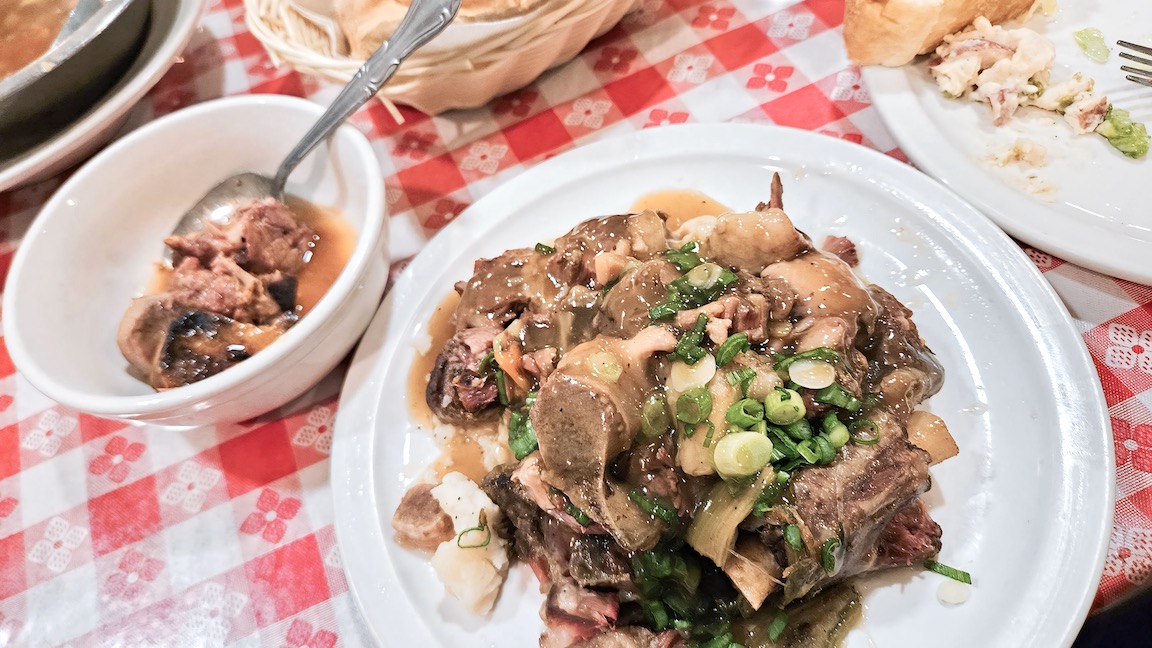
Oxtail special at Wool Growers Restaurant (Photo: Gil Asakawa)
Picon Punch cocktail for Robin Koda and Jane Matsumoto, as well as soup, lamb stew, lamb shank and the special, oxtail served fall-off-the-bone tender and tasty. The joint wasn’t jumping that night (it was late and by the end, we were the only table), but the service was wonderfully friendly — the staff probably also knew Robin Koda because she’s the Rice Queen.
At all our meals, including the non-Japanese ones (there are not a lot of Japanese choices near the farm, except whatever Robin cooks up), we were able to have great conversations about the past, the present and the future of the community, the food, the traditions and farming.
It was a fabulous trip full of “History and Hanashi,” indeed.
Happy Holidays, everyone, and Happy Eating!
Gil Asakawa is the author of “Tabemasho! Let’s Eat! The Tasty History of Japanese Food in America.”



